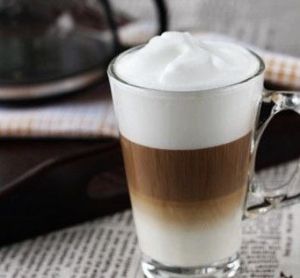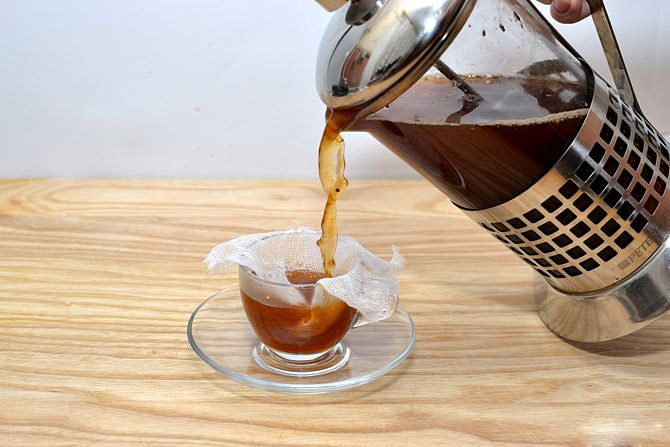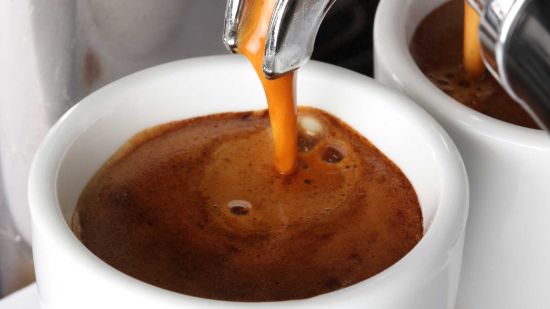Cappuccino SCAE International Standard and solution-must-see by baristas
Cappuccino is a coffee drink invented by the Italians. Its structure is Italian concentrate (Espresso) + milk + milk foam.
The traditional cappuccino practice is: the Italian concentrated / milk / milk foam ratio is 1:1:1, the coffee flavor is stronger, and the milk foam is rough and dry.

SCAE (European Fine Coffee Association) Cappuccino Standard:
1. The cup capacity is 150-180ml
In this range, the taste of coffee and milk and milk foam can be the best blend, reflecting the sweetness and mellow of milk, while reflecting the mellow flavor of coffee (chocolate, nuts and other flavors).
two。 Italian concentrate: 25-35ml
3. Foam thickness: 0.5-1.5cm
First of all, if the foam is too thin, it is difficult to define it as a cappuccino; in addition, if the foam is too thin, it does not make the cappuccino as delicate, dense and as soft as marshmallows. Many TV actresses drink cappuccino with white foam on their lips after drinking coffee.)
4. Beverage temperature: 50-65 ℃
The best drinking temperature for cappuccino is 55-58 ℃, but baristas can also adjust the temperature of cappuccino to some extent according to customer requirements and changes in winter and summer.
But if the temperature is below 50 ℃, it may cause the milk to taste too prominent, covering the taste of coffee, too sweet and greasy; but on the contrary, if the temperature of the drink exceeds 65 ℃ (it should exceed 70 ℃ when foaming), then due to the reaction of protein components in milk, it will lose its sweetness and mellow thickness, and cappuccino will taste bitter, lose its mellow texture and taste like water without characteristics.
Therefore, when the Cabo temperature is between 55 and 58 ℃, it not only reflects the sweetness of milk, but also naturally merges the taste of milk and coffee, reflecting its most perfect and charming characteristics.

Questions about cappuccino:
a. How big should the Cabo cup be? Why are some small, but Starbucks cups so big?
Answer:
1. For large coffee chains like Starbucks, its drinks have their own structural characteristics and will adjust their formulations according to Chinese tastes, but you should know that Starbucks has large cups and more milk, but at the same time it uses a large amount of Italian concentrate, perhaps 2-4shot Espresso.
two。 There are also some differences in the quantity of cappuccino due to the cultural differences between southern and northern cities in China. Generally speaking, cappuccino cups in southern cities are small, generally within 180-220ml, while in coffee shops in northern cities, cappuccino cups are generally about 220-250ml. Northerners are more generous and have a relatively large number of cups.
b. Would you like a cappuccino? Would you like some chocolate powder? Would you like some cream?
Answer:
1. There are two ways to do cappuccino, one is the traditional method of pouring coffee and milk into a cup, and then covered with thick milk foam, the surface is pure white, and the other is the popular flower drawing method in China at this stage.
two。 When producing cappuccino, the surface can be sprinkled without any powder, chocolate powder or cinnamon powder.
3. In fact, cappuccino does not need cream, but some coffee shops will have their own recipes and features, in this case, can you give this drink a new name? (for example, Caf é Kona on Coffee and Tea Street, Minjiang No.2 Road, South District of Qingdao City, has a drink named 'KONA cappuccino'. Its practice is 180ml cup, 30ml Italian concentrate + water + cream. What's the taste of the drink? you'll know by making it yourself.
c. What's the difference between a cappuccino and a latte?
Answer:
The "Latte" in coffee latte means milk in Italian, which is equivalent to milk. So coffee + milk is actually a latte. Lattes generally have more milk than cappuccino, but the foam is thinner than cappuccino, so it is more milky. In other words: coffee flavored milk.

Source: network
Important Notice :
前街咖啡 FrontStreet Coffee has moved to new addredd:
FrontStreet Coffee Address: 315,Donghua East Road,GuangZhou
Tel:020 38364473
- Prev

Different types of coffee makers have different tastes and characteristics.
Still drinking instant coffee? Aren't you afraid of being said to be too much? Have their own coffee utensils, in the office, at home now enjoy coffee, how comfortable, more face-saving. The point is that you can taste pure coffee. There are many kinds of coffee utensils. Today, Lao Qian will show you several kinds of coffee pots he collects and uses. American drip kettle this is a classic drip filter. Turn it on
- Next

Scientific interpretation of Coffee extraction terms-Coffee must see knowledge
Coffee extraction is very knowledgeable, especially in the production of espresso. Here are some terms that professionals often use when talking about coffee extraction. Let's learn the following. Blonding: describes the conversion of the liquid from dark brown with tiger stripes to uniform light yellow. Usually this happens in the last 1amp 3 stage, which suggests that the extraction can be ended.
Related
- What is the meaning of lactic acid fermentation with coffee bean treatment?
- How to judge the state of foam by sound?
- How does the latte pull out the unicorn pattern? Come to get for a little trick to improve the flower pull!
- Will flower pulling affect the taste of the latte?
- Do you know the history of coffee?
- The difference between honey treatment and sun washing what is raisin honey treatment?
- What kind of milk can a novice use to make coffee foam to keep the foam longer? The correct method and skills of milking tutorial sharing
- Why do washed coffee beans taste sour? Flavor characteristics of washed Coffee
- Introduction to the skill of how to practice the size and height of water injection around the circle of hand-brewed coffee
- How do beginners practice coffee flower drawing from scratch?

